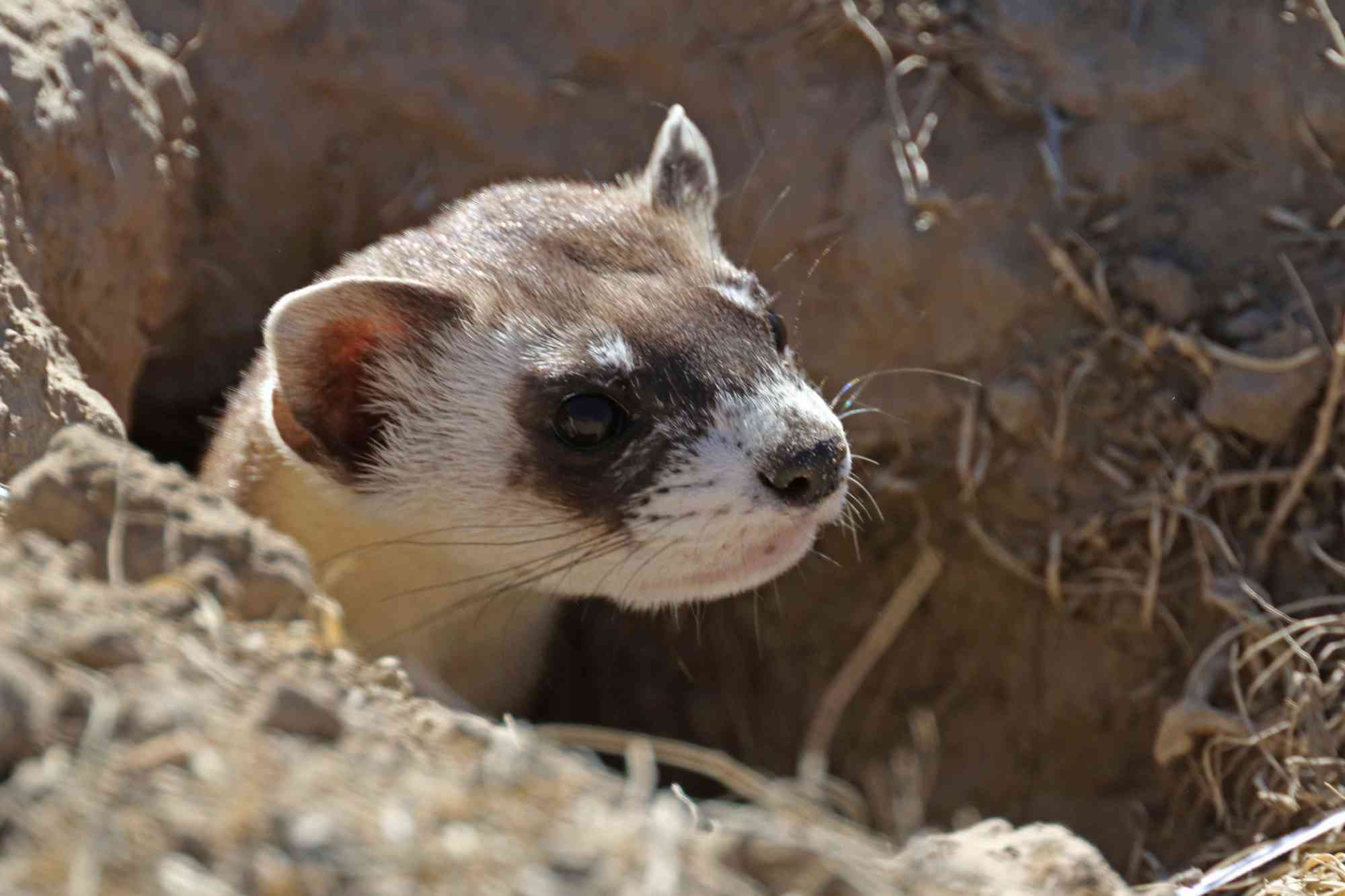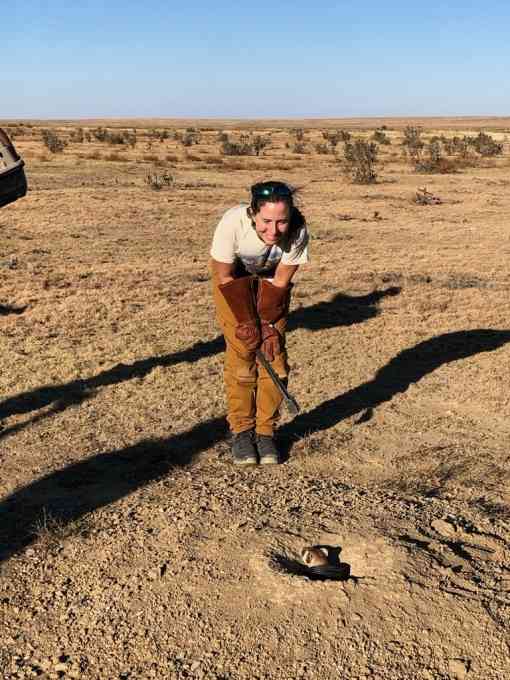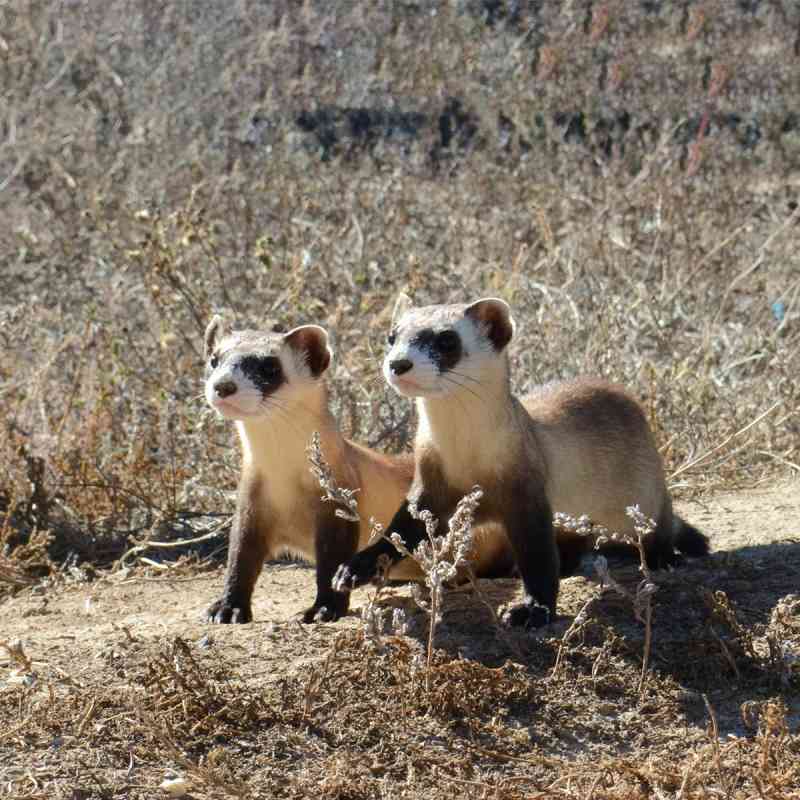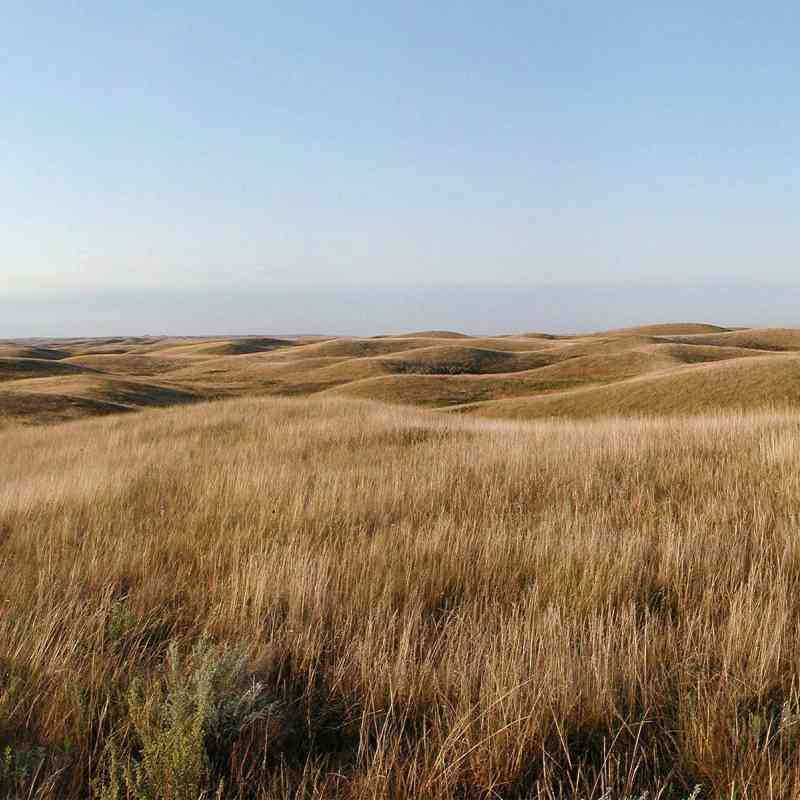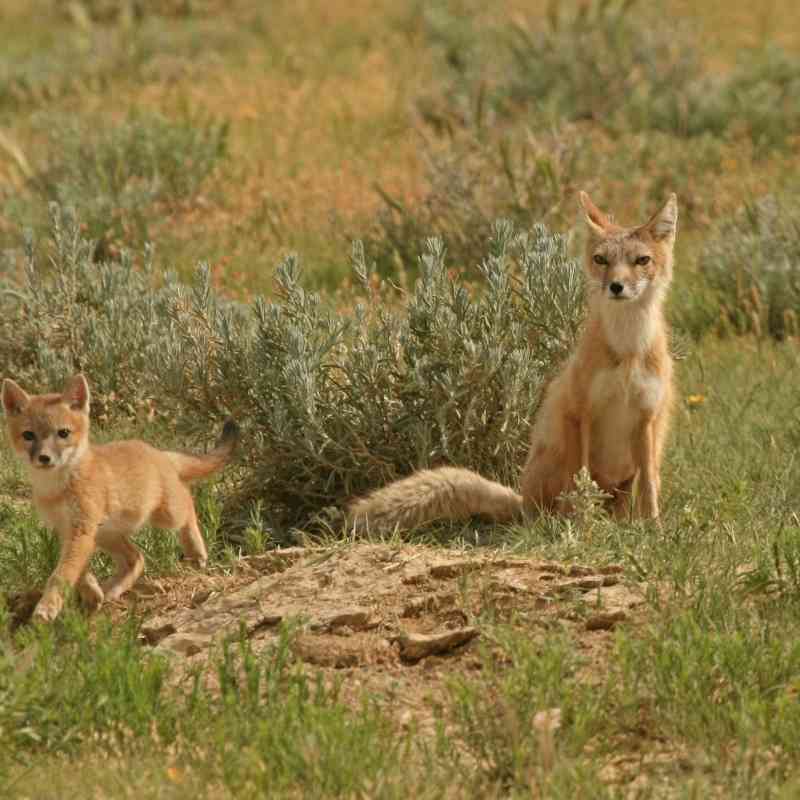I marched across the short, crunchy buffalo grass with a pet carrier in each hand, looking down to prevent myself from stumbling on a cholla cactus, prairie dog burrow or rattlesnake. It was a bad time to be clumsy. I held precious cargo—one black-footed ferret per carrier—two of the fewer than 700 ferrets that make up the entire population of the species.
Six hours earlier, the animals had been plucked from the safety of captivity at the National Black-Footed Ferret Conservation Center in northern Colorado to make the journey down to southeastern Colorado with 28 of their friends. Several people in my group of 15 also carried ferrets, including officials from the U.S. Fish and Wildlife Service and Colorado Parks and Wildlife, two of my Defenders of Wildlife colleagues, and my best friend of 30 years, Nicole.
This October day was perfect: cloudless sky, barely a breeze, not too hot, not too cold, one of my biggest dreams coming true. We were returning black-footed ferrets to their rightful home on the prairie at Heartland Ranch, a 44,000-acre grassland paradise owned and protected by the Southern Plains Land Trust (SPLT). Twenty-five years ago, I was SPLT’s director, and that duty had since become Nicole’s. We reminisced later about the early days when we pooled our pennies and asked everyone we knew for money to buy a small prairie property. Seeing our goal of reintroducing black-footed ferrets come to fruition electrified my soul.
Now, I work for Defenders of Wildlife and am gratified that Defenders supports SPLT’s efforts to restore and maintain ferret habitat—prairie dog colonies—on SPLT’s Heartland Ranch.
The black-footed ferret is one of the most critically imperiled mammals in North America. The species’ survival depends on captive-breeding and reintroduction to recovery sites across the Great Plains and intermountain grasslands where there are prairie dogs. Over 90% of the ferret’s diet is prairie dog, and the little carnivores spend almost all their time in prairie dog colonies, sheltering and denning in empty burrows.
Ferrets need expansive areas where multiple colonies, or complexes, are close to each other. These places have become scarce. Prairie dogs have experienced more than a century of habitat loss due to farming and development, poisoning (because ranchers don’t like them eating vegetation that could go to livestock), shooting and disease. North America’s total prairie dog population, which used to be in the billions, has dwindled to just 5% of its former size.
As colonies shrunk and became isolated, black-footed ferret numbers crashed. Arduous surveys failed to find any ferrets after 1974, and the government declared the species extinct in 1980. They got a second chance when a ranch dog in Wyoming brought a ferret home in 1981. Government scientists found 18 more near the ranch and trapped them all to start a breeding program to reintroduce their offspring into the wild. At the time of the Heartland Ranch ferret release last October, about 300 lived in captivity and 350 to 400 existed in the wild.
The prairie dogs at Heartland were not happy to see their archenemy make a reprisal. They belted out alarm calls to their colony-mates and ran for the cover of their burrows as our crew made its way to different sections of the colony to spread the ferrets out. I’m sure the prairie dogs felt they had enough predators to dodge with hawks, eagles, coyotes, badgers and snakes nearby.
Nicole had the honor of releasing the first ferret. When my turn came, I kneeled down at a prairie dog burrow with a biologist from Colorado Parks and Wildlife, who instructed me. The pet carriers all contained one ferret, plastic tubing to mimic a burrow where they could hide, a few pieces of prairie dog in case they needed a snack during their journey, and paper shreds for insulation and to provide stability. I wore heavy gloves in case the ferret felt feisty and wanted to bite. I held BBQ tongs to pull out the tubing in case the ferret needed a nudge into the burrow. Sometimes the ferrets dive right in, other times they resist. The people in my group circled around, taking photos of each part of this momentous occasion. My ferret let out characteristic loud, angry twitters, cautiously poked her head out and took a long scan across the landscape. Then, whoosh, she disappeared down the burrow.
The black-footed ferret I released would have to figure out how to survive in the wild, hunting prairie dogs and avoiding predators like coyotes. We had high hope she would find a mate among the male ferrets in the colony and have kits. Being the first of generations of ferrets to inhabit this land would be the ultimate success and a significant contribution to the recovery of her species. I’m proud that my coworkers and I have tenaciously endeavored for decades to help recover the black-footed ferret, and I can’t wait to see what the future holds.
Author

Lauren McCain
comments
Wildlife & Wild Places

